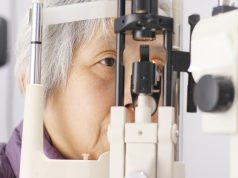Test quality similar for the Humphrey static, Octopus combined approaches for glaucoma in kids over 10
FRIDAY, Jan. 5, 2018 (HealthDay News) — A simple static perimetry approach may yield higher-quality results than a combined perimetry approach in children younger than 10 years with glaucoma, according to a study published online Dec. 28 in JAMA Ophthalmology.
Dipesh E. Patel, Ph.D., from the University College London Great Ormond Street Institute of Child Health, and colleagues conducted a cross-sectional study recruiting children at two specialist pediatric ophthalmology centers. Data were included for 65 children aged 5 to 15 years with glaucoma, with 108 affected eyes.
The researchers found that there was improvement in the test quality for both Humphrey static (Swedish Interactive Thresholding Algorithm 24-2 FAST) and Octopus combined static tendency-oriented perimetry/kinetic perimetry (isopter V4e, III4e, or I4e) strategies with increasing age; these strategies were equivalent in children older than 10 years, while in younger children, better-quality tests were achieved with Humphrey perimetry. There was disagreement when Octopus and Humphrey static MD values were worse than or equal to −6 dB, while values were comparable when greater than this threshold. Substantial agreement was seen for visual field classification scores for static perimetry tests; with Octopus perimetry, 31 percent of cases were graded with a more severe defect.
“A simple static perimetry approach potentially yields high-quality results in children younger than 10 years,” the authors write. “For children older than 10 years, without penalizing quality, the addition of kinetic perimetry enabled measurement of far-peripheral sensitivity, which is particularly useful in children with severe visual field restriction.”
Abstract/Full Text (subscription or payment may be required)
Editorial (subscription or payment may be required)
Copyright © 2017 HealthDay. All rights reserved.








